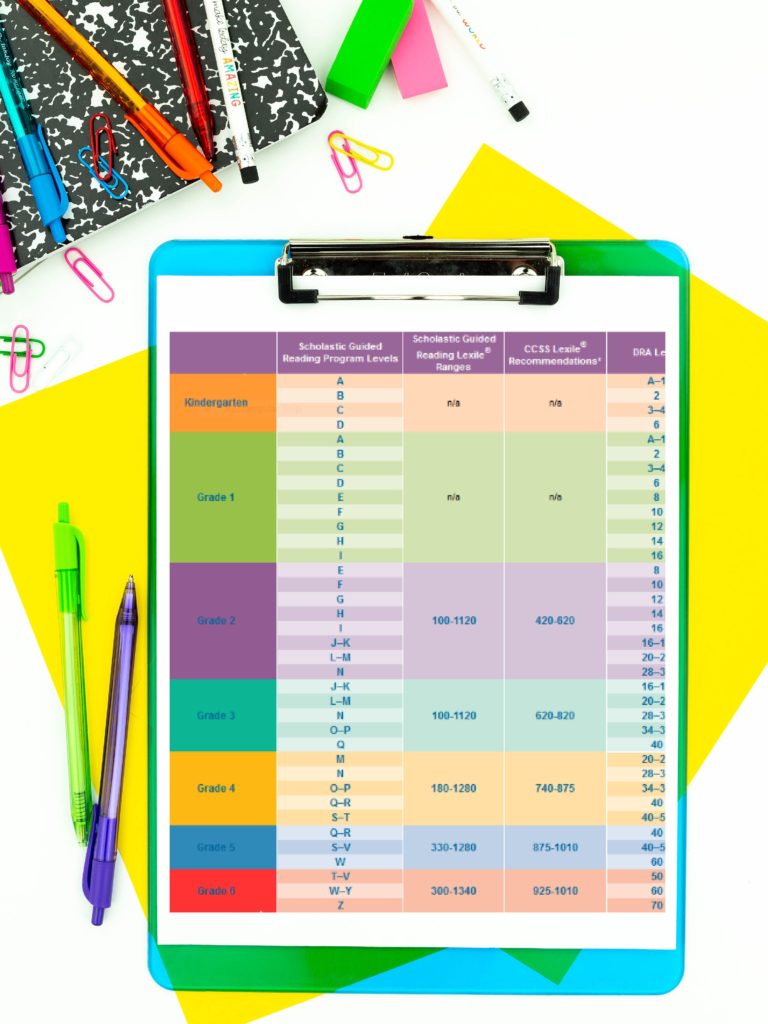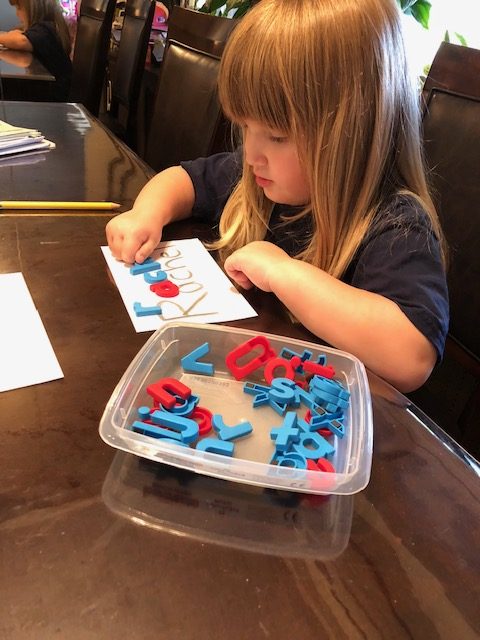What level should my child be reading at is a question I get as a parent and as a teacher everybody wants to know where their child falls in relation to other children. What level should a kindergartener be reading at? The problem is there’s no one way to assess a child’s reading . Some schools use guided reading levels. They go by letters. The letter A is the easiest for beginning readers and Level Z is considered a proficient reading. Some schools use DRA (Developmental Reading Assessment) which uses numbers. This program assesses accuracy, fluency and comprehension. Some schools use Lexile level which is based on a system that gives very high numbers to books according to a formula that rates sentence length and vocabulary difficulty. All these different ways make parents and even some educators confused about picking a good book for their child.
So when someone says what level should a 2nd grader be reading on? I want to be able to give that person real information. It is widely believed that students should be reading at the level I or J or a 16 DRA at the end of first grade. But if you’re not educated in those systems how do you know that your child is reading an appropriate book? How do you know that you are supporting their reading? How do you know that your child is on grade level? It’s better to know the skills your child should have mastered and the skills that the book addresses in order to know if your child is doing grade level work.

Skills for Each Grade
Kindergartners should be able to read and write their first name. They should be able to recognize the letters of the alphabet and know the sounds that those letters represent. Kindergarten students should also be able to read some high frequency words such as: the, are, and you. These are words that may not be easy to sound out but are used in everyday sentences. They should also be able to recognize the difference between a capital letter and a lowercase letter and recognize that a sentence has punctuation at the end of it. Kindergarten students should be able to hear sounds in words. They should be able to break apart compound words and count the sounds in words. They may also be able to read some three letter words (cat, pen, dog).
A first grader should know all the things that a kindergarten student knows: letters, sounds, and high frequency words. But a first grader will learn more complex patterns. They will learn digraphs which are two letters that make one sound, blends which are two or three consonants that each make their own sound, they will learn long vowel sounds. They will be able to write more complex sentences with more high frequency words. Most first graders can rhyme words and recognize word families. They will learn syllable types such as a closed syllable and a vowel consonant E syllable. First graders will also be exposed to vowel teams and R controlled vowels but those are not skills that are usually mastered in first grade.
Second grade students also need to learn phonics and although they can read consonant vowel consonant words and usually consonant vowel consonant E words, they still need practice learning and using vowel teams correctly. They need to become confident in identifying and spelling r-controlled vowels correctly. The students will learn more about prefixes and suffixes as well as base words. Second grade students will learn syllable types as well. They will of course know the closed syllables and the vowel consonant e words but they will also learn open syllables and they will learn r-controlled syllables and they will learn the LE final syllable. A second grade student should be able to read smoothly without sounding out most words. They should have accuracy and prosody.

Most teachers are given an assessment to use school wide or district wide. These assessments will provide a level for students. Not all of a child’s reading should be from leveled readers. Children need to read decodables to gain confidence in sounding out words. Decodables are widely available online; some are even free. Reading A-Z has printable decodables that are easy for parents and teachers to access. https://www.mrsjudyaraujo.com/free-decodable-and-sight-word-stories/
Children also need to be exposed to rich literature either through shared reading or read alouds. Children should be encouraged to read high quality books everyday. The more children read and are exposed to books the more they will learn to read.

Teachers should focus on the skills that are taught in each grade level and provide the students with text that reinforces taught skills. Teaching students cvc words but then giving them books that contain all high frequency words is not productive. The children get frustrated because they do not know the words and they miss out on the practice because an adult has to help them read the words. Reading should not be a struggle and if it is then the child needs to be retaught the skills and provided with an appropriate text.
Decodable texts are really the gold standard for reading instruction. It makes sense… teachers teach a skill such as short vowels and then give students text with short stories to read as practice. When teachers teach blends then students practice reading words with blends. Students have the opportunity to practice what they have learned and not feel frustrated by words that are too hard. Students learn to stop guessing and start really reading the words on the page. Leveled readers do not provide this kind of practice.
Most parents do not understand the difference between a level B and a level K book. They think it’s better to be K because it’s further along in the alphabet. Schools need to stop pushing these arbitrary levels and start focusing on the skills that the students have mastered. Can they read CVC words, can they read blends, do they read prefixes and suffixes when reading, can they identify long vowels in words? If the answers are yes then the focus can switch to comprehension. Do they know what the words mean, do they understand the sequence and do they understand the underlying message of the text? Schools need to teach in a systematic way. Teach the foundational skills before teaching the higher level skills. Check here for more information to help your children. https://decodingforsuccess.com/
So the next time a parent or supervisor asks for a reading level, let’s try to remember to include the actual skills that the student has mastered so everyone is speaking the same language because a guided reading level F is very different from a DRA 6 or Grade Level Kindergarten.
